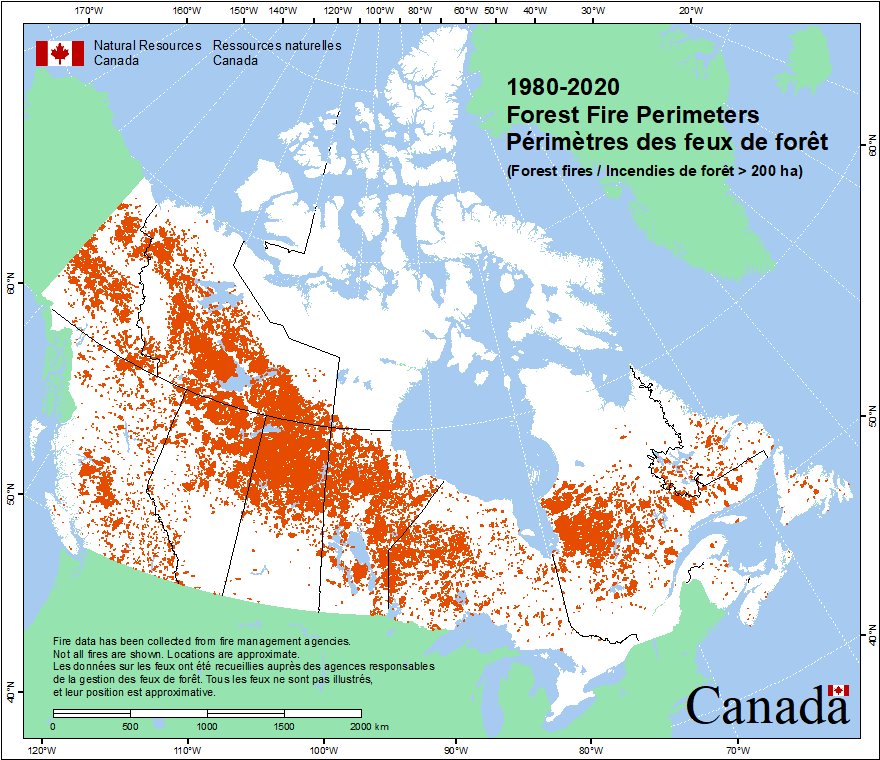Examining Plots Before Making Claims
This blog post looks at the importance of carefully examining plots before making strong claims. It uses the example of a study looking at which regions that are not currently fire prone might become fire prone.

Zeke Hausfather
"A tireless chronicler and commentator on all things climate" -NYTimes. Climate lead @stripe, writer @CarbonBrief, scientist @BerkeleyEarth, IPCC/NCA5 author.

-
This is a good example of the need to carefully examine plots before making strong claims.
— Zeke Hausfather (@hausfath) June 7, 2023
It in fact tells us nothing about whether eastern Canada will become more fire prone or not in a warming world. https://t.co/SnBVDtZiyb -
Rather, the study in question (Knorr et al 2016) looks at which regions that are not currently fire prone might become fire prone (or vis versa). For Canada, it sees areas in the southwest that are not currently fire prone transitioning to fire prone regions.
— Zeke Hausfather (@hausfath) June 7, 2023 -
However, the current wildfires in Eastern Canada are already in regions that are fire prone today, so they show up as green in the plot Roger tweeted.
— Zeke Hausfather (@hausfath) June 7, 2023
In other words, they will not change from not fire prone to fire prone in a warming world because they are already fire prone. pic.twitter.com/w4CVINh8gw -
So what will happen to wildfire in eastern Canada? I haven't come across too many studies specific to the region (and certainly no attribution studies of specific events like the current one), but we'd expect the prevalence of fire weather to increase in a warming world. pic.twitter.com/YBzU6FBkI6
— Zeke Hausfather (@hausfath) June 7, 2023 -
My Canadian climate scientist friend @LabradorIce pointed me to this useful study of the change in the expected number of days per fire season where active fire growth potential exists (albeit in RCP8.5, so cut those in half for a more plausible scenario): https://t.co/JrYAI9IeQs pic.twitter.com/YSYn1lJg6Y
— Zeke Hausfather (@hausfath) June 7, 2023 -
And another one: https://t.co/Dz8GbKrcWz pic.twitter.com/rffxFB4cUb
— Zeke Hausfather (@hausfath) June 7, 2023 -
Roger notes that the Knorr et al 2016 classify all of Canada as not fire prone in their supplimentary materials. But this is pretty inconsistent with actual Canadian data, which shows fires across a large swath well over the 1/100 year frequency required to considered fire prone. pic.twitter.com/vHrgDWCvbp
— Zeke Hausfather (@hausfath) June 8, 2023 -
This may be a global model not reflecting local data well in one region. Either way, its a stretch to interpret the figure as the IPCC stating there would be no increase in fire activity in western Canada in a warmer future given the literature on the topic discussed upthread.
— Zeke Hausfather (@hausfath) June 8, 2023 -
Perhaps @w_knorr can weigh in on whether his paper (and the IPCC's use of it) implies that "the IPCC does not project eastern Canada to become more fire prone under any climate scenario".
— Zeke Hausfather (@hausfath) June 8, 2023
